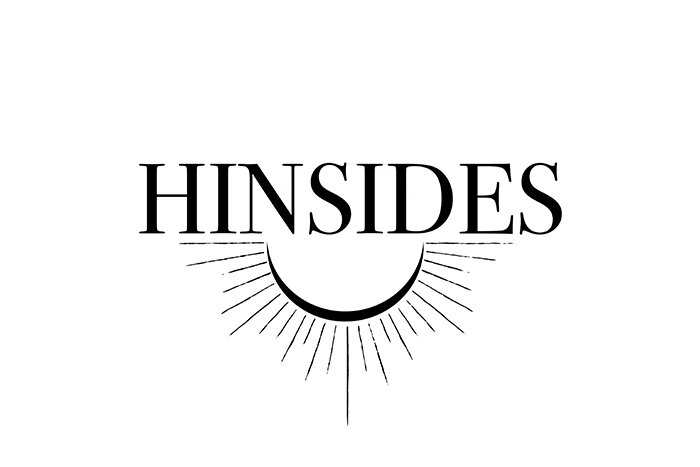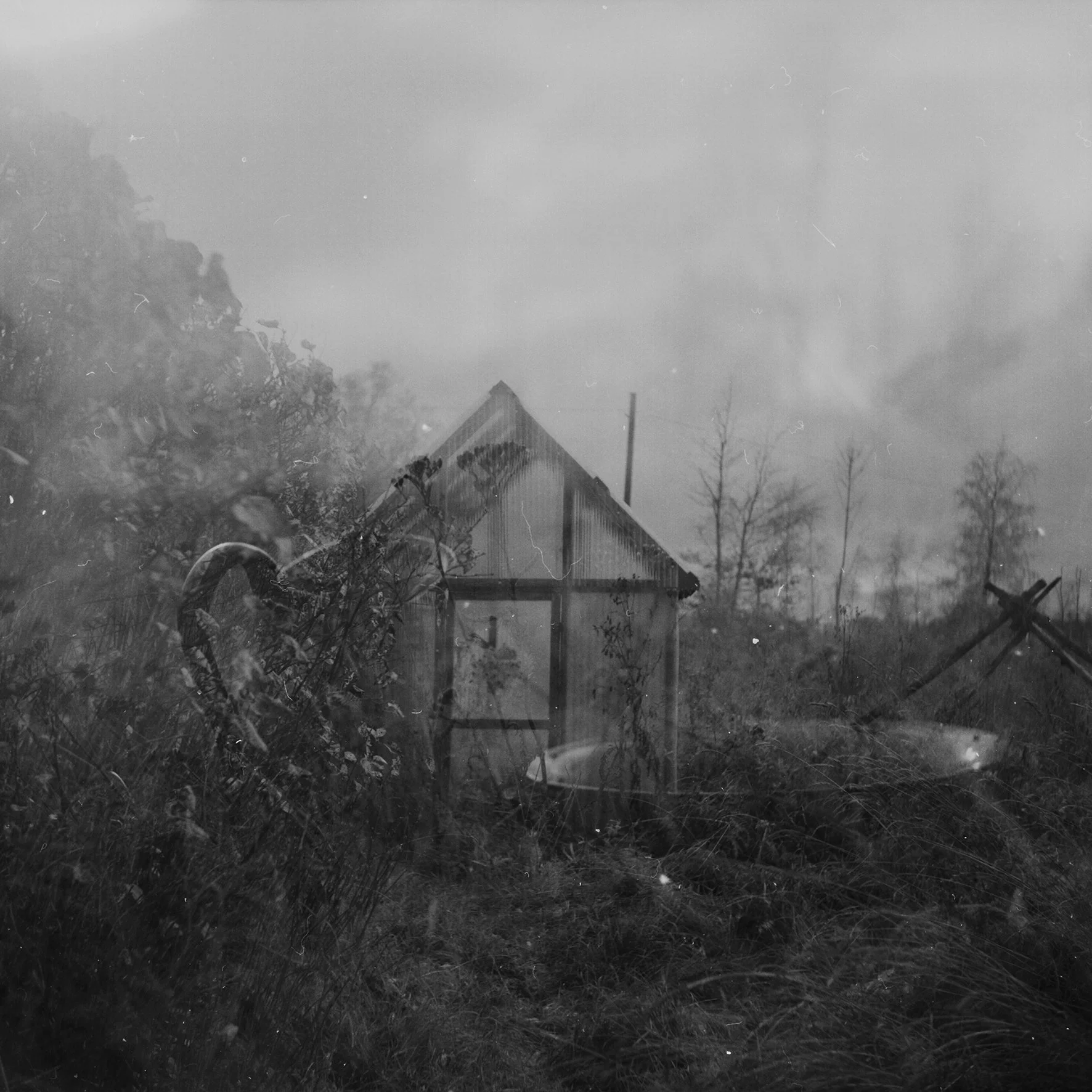Enmiljontystnader
First there was silence, and then came light. Nathalie Ericson embodies this narrative in herself, and through her lenses flows the love of nature as a strong marvelous light. Meet an experimental photographer who found her voice through a mechanical third eye. A voice that talks in riddles about things unseen.
…
Text:
Hinsides Magazine 2022
Photos:
Nathalie Ericson
- Hello there and welcome to Hinsides magazine! Please describe the milieu that you are at right now. You may also say something about what kind of things that surrounds you while answering the following questions.
- Right now I´m in my apartment in Sweden. It's the end of December, it's evening and a candle is lit. Next to me there´s a mixture of books such as “The Journal of Henry David Thoreau 1837-186”, “Rose and bread” by Marianne Linder and “Man and His Symbols” by Carl Jung among others. I´m in the middle of writing an essay in cultural studies and a reading period where I want explore topics yet unfamiliar to me. At the same time I´ve experienced a need to return to some old favorites. The darkness breeds even more longing this year, so my strategy is to fill everyday life with books.
It´s no secret that Hinsides Magazine found out about you through your beautiful and mesmerizing account on Instagram. A platform where you´ve manage to gather a large number of followers in what seems like a fairly modest amount of time. What could you tell our us about your presence on this particular media and how you feel about using it? Was there any kind of initial plan there from the beginning and how do you picture your relation in the future?
- Instagram is a good social channel if you want to reach out with your art. It can´t ´really replace the galleries and other rooms where art is displayed though. I´m sometimes divided on the question of using Instagram due to many reasons. One is that you encounter so much pictures on social media, which makes it difficult to meet the works of art in peace and quiet, or in the physical context they are meant to be in. The issue of censorship is also problematic as it goes against freedom of expression. Something that is essential for any kind of art.
So, what´s the story behind how cameras became your choice as a mean to express yourself and make images? Is it possible to recall any crucial moments for you as a photographer and artist, and how do you relate to these titles?
- The interest in creating photos began with a painful period of silence that later in life resulted in a photographic project. A project which also laid the foundation for "Enmiljontystnader" as I call myself on social media. I lived with speaking anxiety for many years, from primary school to the beginning of high school, which limited me in various ways. The camera often became my tongue and spoke when the words twisted in my mouth and dissolved hidden knots within me. However, I'm not sure why the camera became my choice of medium.
Would you mind to shed some light upon your creative process and what kind of techniques that you use? Does your work rely on both analogue and digital tools?
- I mostly shoot analog, but sometimes I also shoot digitally when I want to be able to control the photographic process better. Some recurring techniques that I use are double exposure and long shutter speeds. I also use other methods such as experimenting with the negatives by firing on or cutting them apart. Doing so adds another dimension that sometimes provides a surreal expression.
Your ways of exploring with the lens seems to levitate towards the surreal and otherworldly with nature as a backdrop for existential contemplations. Would you agree on such a description of what you do, or how would you explain what you want to achieve to someone previously unexposed to your images?
- It’s difficult to explain something that is so meaningful in everything I do and as close to who I am. Nature is not only important in my photographic process. Nature is like a temple that embraces my existential needs. A home and a reservoir for dreams and thoughts. And with the help of the camera's technology I can create a parallel world where thoughts and emotions can be visualized and speak clearly and openly. When I started taking photos many years ago, I felt sort of alienated in how I thought about existential questions. The camera became a way to create dialogues about existence and death. At times I was completely immersed in the visual. As if I had no inhibitions in what could exist in the photographic world.
It´s not very difficult to see connections in your work with early experimental photography. Names such as Man Ray and Dora Maar comes to mind. Are you familiar with this era in art history and if so, do you think that the legacy of such pioneers has any kind of relevance today? What, in your opinion, makes a great artist, and how would you describe your own main assets as an artist?
- The experimental driving force among the great artists has been important in my own creative process. To be daring enough to test my ideas and to let what feels right lead me has been important steps. Man Ray and Dora Maar inspired me at an early stage. And many more like Francesca Woodman and Julia Margaret Cameron to name a few. These artists are still very relevant today, I think, and it has probably something to do with their experimental ability and also that they were groundbreaking in their ideas during their time and created a completely unique expressions. This can be seen in Julia Margeret Cameron's photos that often is out of focus. Something that were not common during her time. And her way of portrait human expressions is also timeless.
On the other hand I'm not sure about what defines a skilled artist. I think it has a lot to do with the time that prevails, what kind of art that is new and popular during a particular time and how the world changes. However, this does not mean that art is good just because it’s more widespread and appreciated. My own attitude to this has always been to create what feels honest and genuine, and where it takes me does not matter so much. Creating art is more a spiritual necessity for me.
How about education then? Are you self-taught or have you maintained learnings and insights from any kind of educational institution? Do you think it´s possible for a school to teach how to create art? What is your thoughts and experiences related to this issue?
I´ve studied fine art photography, but beyond that I´m self-taught. I believe that an education can be good for supporting one's artistic development, but I don’t believe that education can teach you to create art. The education gives you the tools, but the school or the teachers don’t give the keys for your artistic expression. And the question of what art is, is a big philosophical question. On the other hand, education has a significant role depending on what you want with art.
Have you had any exhibitions yet that you can tell us about? (Like showing your work physically in a gallery?) If not, how do you vision to arrange such exposure?
- I had an exhibition at Kollängen's courthouse together with Erik Gärdefors (Grift) and Malin Mellryd in the autumn of 2020. And most recently I had two exhibitions in the summer of 2021 in connection with Grift's tour in Sweden. I exhibited my pictures in a greenhouse and in a abandoned house. In the greenhouse, I exhibited pictures of objects together with the objects I had photographed and the motives in the pictures were places near the greenhouse. I really appreciate such exhibitions that takes you beyond the white cube. It gives a completely different experience that I like. So it’s something that I hope to be able to do more of in the future.
So, before we call it a day it would be interesting to know how you picture the future and the opportunities to get by as an artist? Any plans or promises you like to share to our readers?
- I´m educated in cultural studies and don’t work as an artist myself. If I think of artists in general, I wish it could be easier to work as an artist without having to live with precarious working conditions and precarious agreements. It really is something that has to change for the better in the future.
You´ve just read an interview with “Enmiljontystnader” made by Hinsides Magazine.
The whole conversation will be published in the next physical issue of the paper in question. Previous issues can be ordered here:




